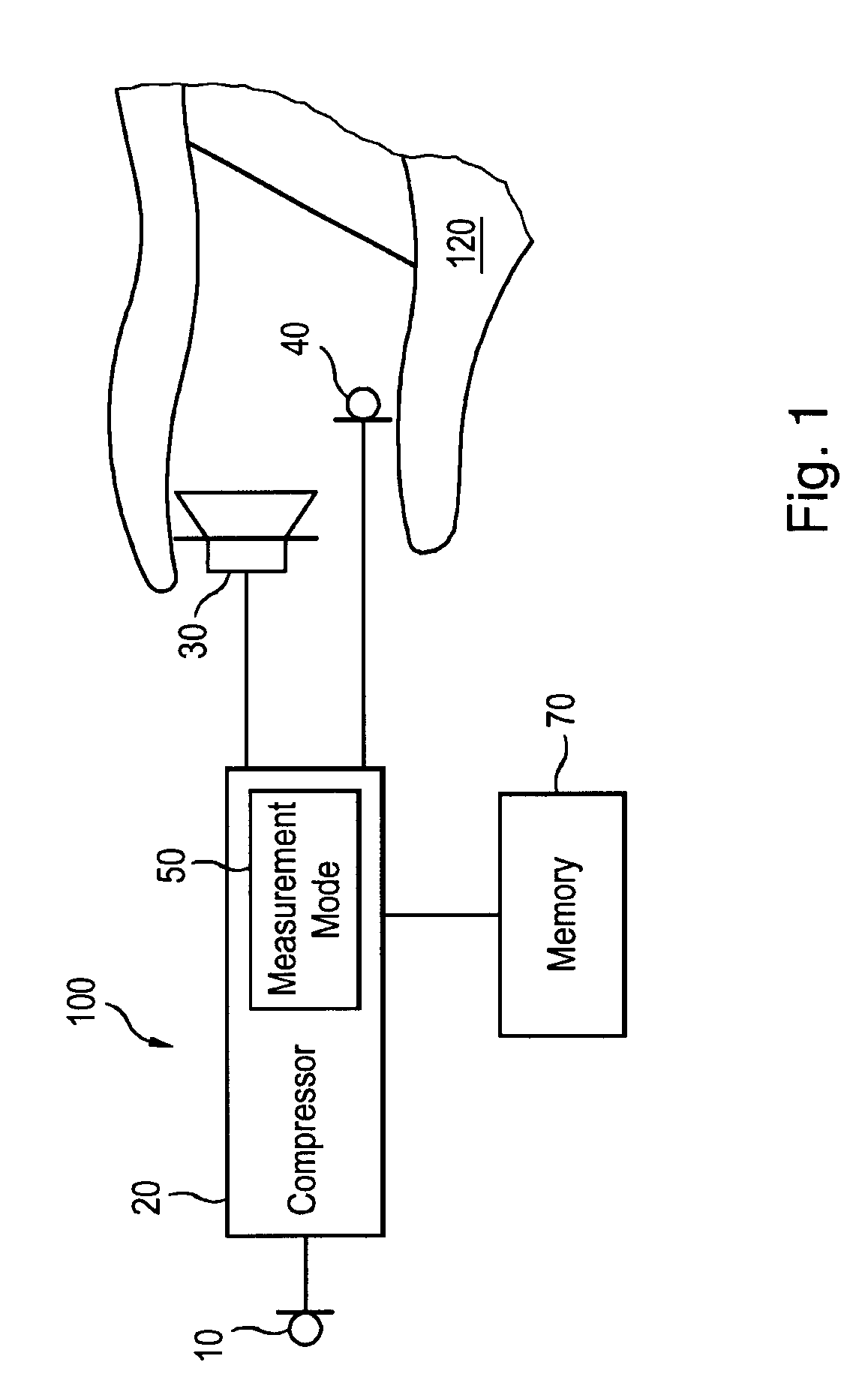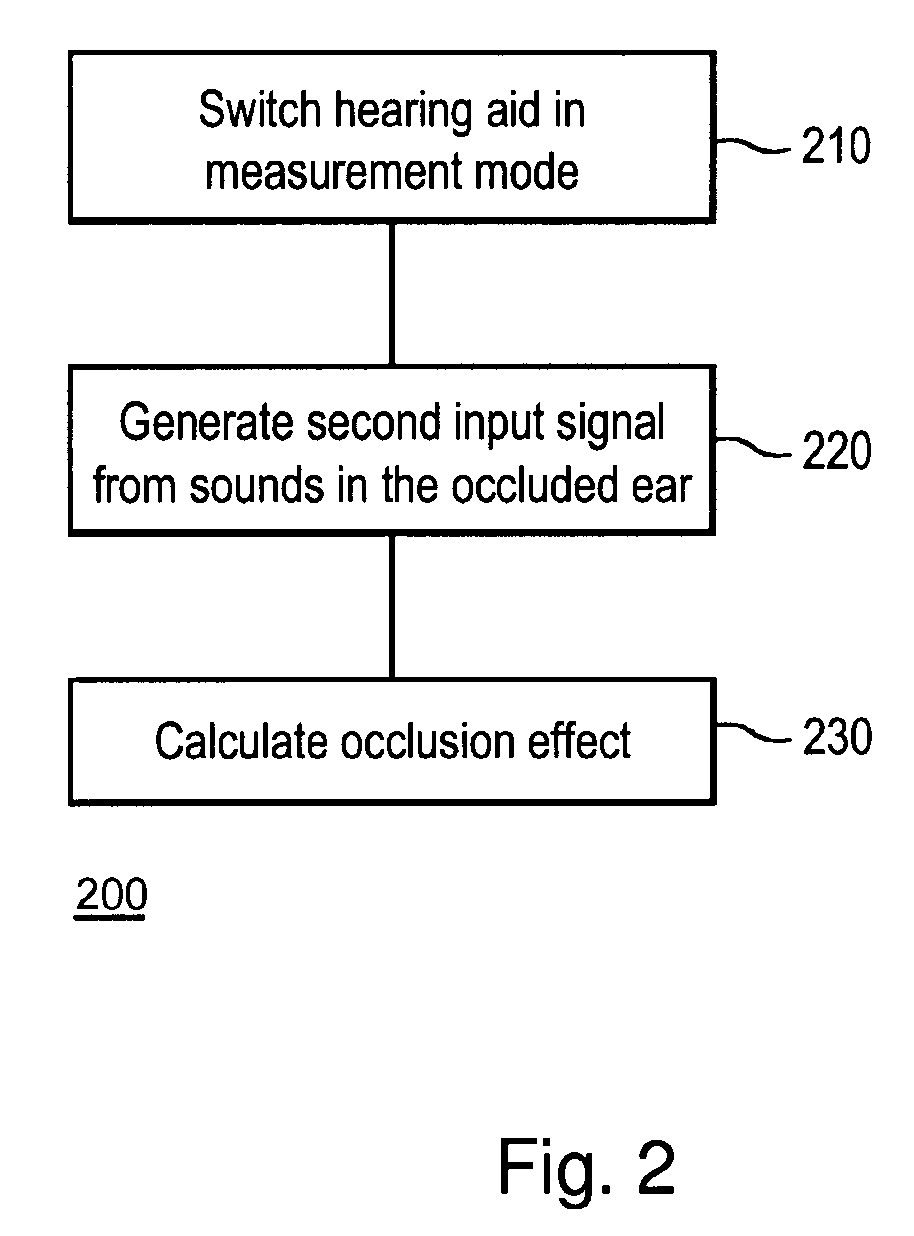Hearing aid method for in-situ occlusion effect and directly transmitted sound measurement
a technology of in-situ occlusion and hearing aids, applied in the field of hearing aids, can solve the problems of inability to drill a larger vent, user may perceive his or her own voice as hollow or booming, and the effect of occlusion is well-known
- Summary
- Abstract
- Description
- Claims
- Application Information
AI Technical Summary
Benefits of technology
Problems solved by technology
Method used
Image
Examples
Embodiment Construction
[0048]When describing the invention according to embodiments thereof, terms will be used which are described as follows.
[0049]The occlusion effect (OE) is defined as the difference between the sound levels just in front of the ear drum in the occluded versus the un-occluded ear while the user speaks or vocalizes sound and when the hearing aid is not active.
[0050]The sound uttered by a user is generated in the throat (glottis) as harmonics of a fundamental frequency, and is shaped by the area function of the vocal tract. The sound generated spreads as air conducted sound as well as bone conducted sound, the latter in form of vibrations in the skull. In the ear canal, mainly the cartilaginous part of the ear canal radiates sound into the ear canal. This sound mainly propagates out of the open ear, but in case the ear is occluded, mainly the low frequency part of this sound propagates to the eardrum instead. This increases the low frequency sound pressure at the eardrum in the occluded...
PUM
 Login to View More
Login to View More Abstract
Description
Claims
Application Information
 Login to View More
Login to View More - R&D
- Intellectual Property
- Life Sciences
- Materials
- Tech Scout
- Unparalleled Data Quality
- Higher Quality Content
- 60% Fewer Hallucinations
Browse by: Latest US Patents, China's latest patents, Technical Efficacy Thesaurus, Application Domain, Technology Topic, Popular Technical Reports.
© 2025 PatSnap. All rights reserved.Legal|Privacy policy|Modern Slavery Act Transparency Statement|Sitemap|About US| Contact US: help@patsnap.com



